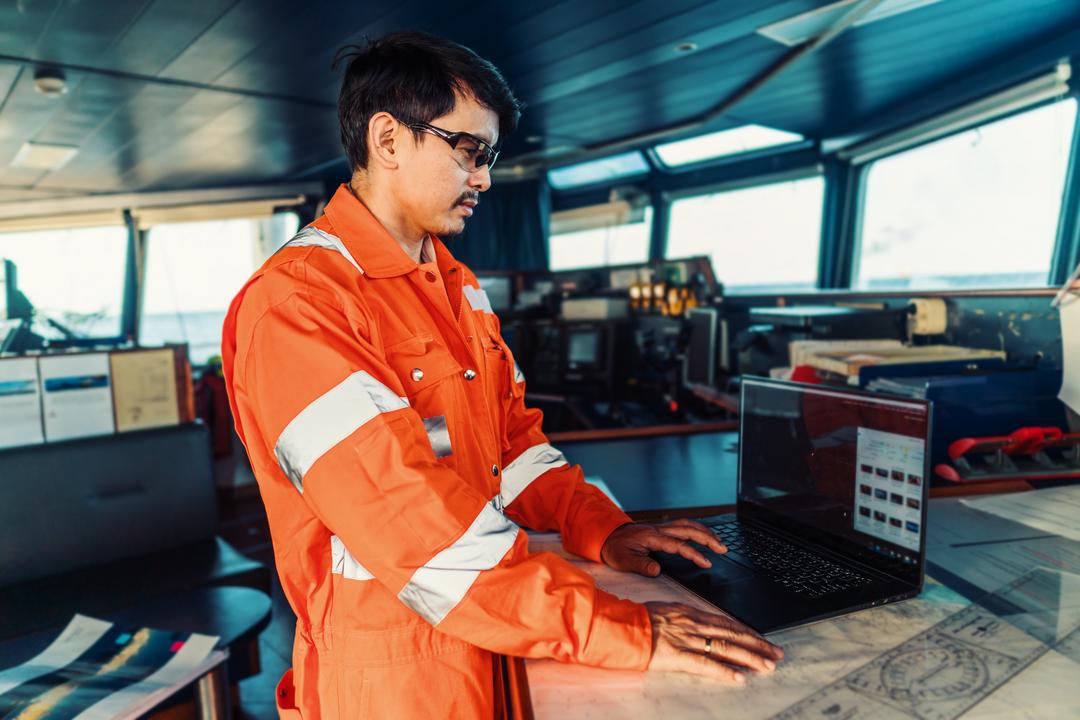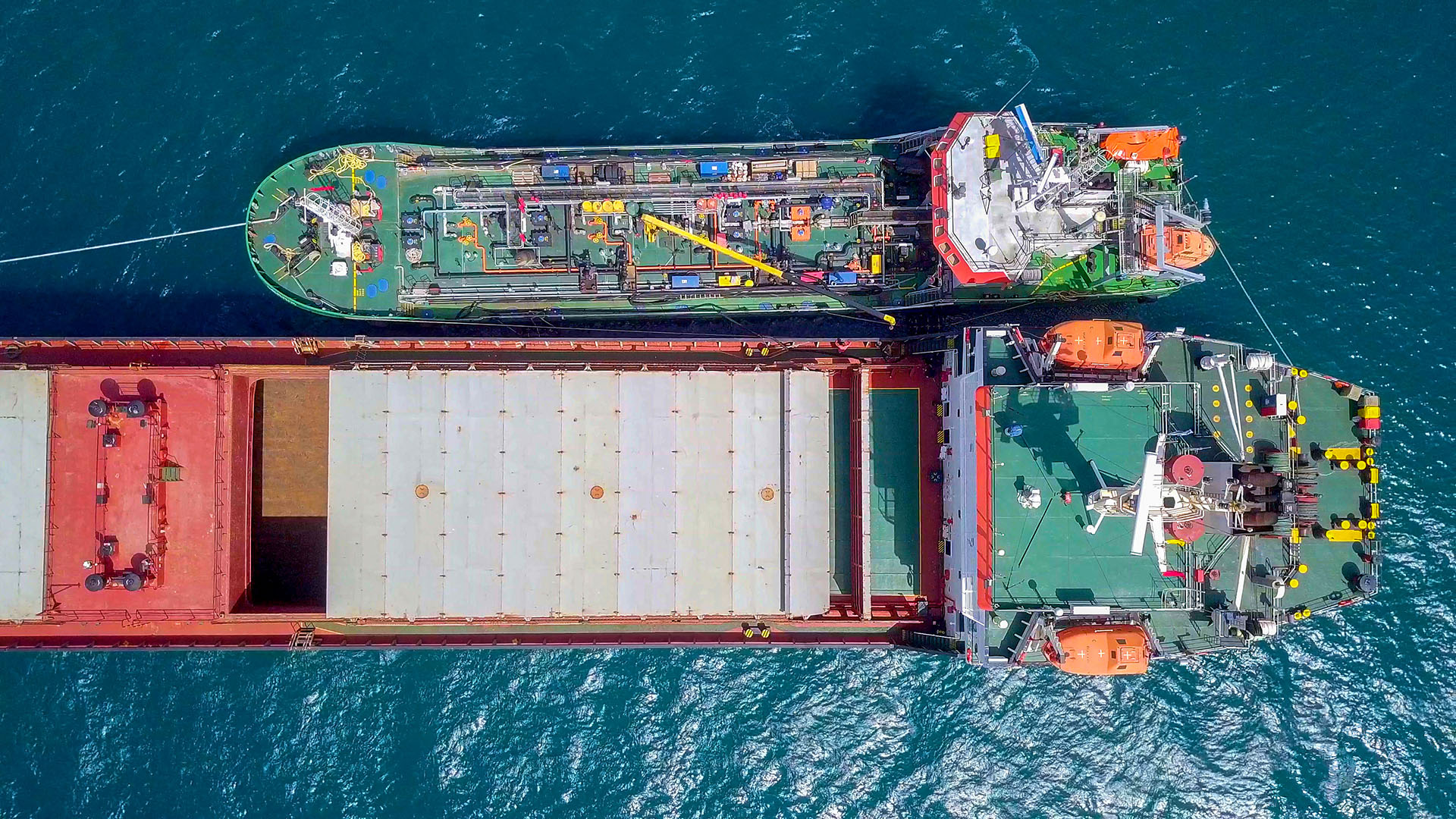Managing dispersed assets has always been an absolute necessity and a significant challenge for owners and operators. Companies that effectively manage their vessels are more likely to realize substantial advantages.
This isn’t just about fleet tracking but optimizing operations for better fuel management and efficiency. This, in turn, helps with cost reduction, contributes to corporate sustainability requirements, balances deployment with fleet maintenance needs, and ensures that businesses get maximum return on their investments.
Yet, if anything, fleet management has become more important than ever. Increasingly stringent regulatory requirements surrounding greenhouse gas emissions (GHG) are being introduced by various bodies. The International Maritime Organization’s MEPC 80 with its revised emissions targets, Carbon Intensity Indicator (CII), and Energy Efficiency Existing Ship Index (EEXI), along with the European Union’s Emission Target Scheme (EU ETS), are all pushing vessel owners and charterers to find new ways to monitor the performance of their fleets.
This isn’t new for operators; many already use an array of tools to do so. Yet the effectiveness of these solutions varies, with some anchored in practices that predate digital technologies. Put simply, many are not fit for purpose.
There’s also the issue of the disconnect between owners and charterers. Managing fleets effectively is difficult without a complete view of technical and day-to-day operations performance. Yet, often, owners have information on the former while charterers own the latter. Building a full picture of fleet performance will be extremely challenging without close collaboration between the two parties.
One way of overcoming that is having a trusted, single source of truth that automates the gathering and presenting of data on fleet performance and gives all parties real-time visibility of their vessels to make decisions collaboratively.
Why do you need a fleet management system?
To answer that, it is first important to understand the purpose of fleet management software.
First, it helps improve fleet efficiency. With more sensors and devices launched daily to help generate information, vessel operators have significant opportunities to gather more incisive, real-time insights into individual ship performance. Yet there is a danger that they become overwhelmed by the volume of data being produced, missing vital intelligence and trends that could significantly impact their operations.
Fleet management software can help simplify fleet data from individual vessels to give operators a clear picture of overall fleet performance. This might mean being able to look at overall fuel consumption or breaking it down into the routes or vessel types using the most fuel. By providing a top-down view, fleet performance managers can better identify potential problems, such as vessel performance degradation, than if they were reviewing individual vessels one by one.
Armed with this intelligence, operators can then take steps to reduce fuel consumption and, as a result, reduce emissions as well.
And emissions are the major focus for many of the regulations fleets are subject to, such as MEPC 80. As Matt Hieder, our CDO wrote in a recent blog post, “Hitting the 2030 targets will require a combination of efficiency savings and alternative fuels.” Monitoring and managing fleet performance is critical to realizing those efficiency savings by ensuring only necessary fuel is consumed.
It also has a role to play in the use of alternative fuels and energy-saving devices. While nearly two-thirds (61%) of new build orders by tonnage in 2022 were capable of using alternative fuels, the reality is that the introduction of these new energy sources is still very much in its infancy. Fleet operators want to know how they perform compared to heavy fuel oil (HFO), which fleet management software can help with. Not only can it capture emissions data to contribute to regulatory compliance, but it can also generate data and insights to inform decision-making around energy transitions.
The technology also has a role to play in monitoring the performance of energy-saving devices, such as water lubricants, propeller boss caps, and wind wings. As well as understanding their efficiency and impact, it can also help identify when a device isn’t delivering the expected efficiency savings.
Finally, fleet management software can also help monitor the sensors and devices’ condition and performance, capturing real-time emissions and energy efficiency data. Fleet operators need to trust the data they’re receiving; while the sensors used to generate information and share it with the software are designed for life at sea, they can still malfunction. Identifying anomalies and quickly understanding that the cause is a sensor performing suboptimally is critical to ensure operators aren’t making operational decisions using incorrect data.
How do fleet performance management tools work?
Different solutions will operate in different ways, but broadly speaking, the ideal tool would gather fleet data from various sources and use this information to benchmark the performance of a ship. This would be replicated across all vessels in the fleet, allowing owners and charterers to see optimal performance at both a fleet and ship level.
Once that benchmark is established, the platform should provide alerts when performance dips below those metrics, allowing relevant parties to take preventative action.
It’s worth breaking that down to understand the number of variables a fleet management solution needs to cover.
First, consider where the data, the platform’s lifeblood, comes from. It is generated by an array of sensors, equipment, systems, and machinery onboard a vessel. At the same time, it’s also drawing in information on weather forecasts, sea conditions, routes, port congestion, and other factors outside of the ship. The data type also varies: it might be high-frequency data, continually being created and distributed by sensors automatically, and it might be coming from noon reports, manually compiled and often based on average readings rather than specifics.
That fleet performance platform has to take that data and then present it in an understandable way to different stakeholders. Some solutions will aggregate raw data points and send them at agreed times of the day; others might provide a dashboard, but the emphasis will still be on users to analyze, assess, and take action. It would also be up to users to determine performance thresholds.
This creates room for error and is time-consuming when applied across a fleet of tens, if not hundreds, of ships. The ideal software would highlight trends, provide predictions, and automatically generate benchmarks and alerts when vessels fail to meet those standards.
What features do you need in a fleet management system?
What features would that ideal tool consist of?
First and foremost, it would be accessible to a wide range of users with varying skills in reading, analyzing, and using data. Presenting workers with vast spreadsheets of datasets and expecting them to know how to apply them to their jobs will not be successful; with most employees not being data scientists, any tool needs to present outputs in a way that aligns with existing workflows.
Second, performance benchmarking should be based on actual vessels, not assumptions and theories. The best way to achieve this specificity is to create digital twins, combining historical performance data from the sensors on board the ship and its noon reports to create vessel models that provide thresholds and can also be used to predict performance.
These digital twins inform the fleet management system’s insights and analytics across all vessels, providing stakeholders with a clear, accurate picture of every ship. Any drop in performance, such as an increase in specific fuel oil consumption (SFOC) or reduction in CII grade, triggers an alert, which is automatically routed to relevant users for corrective action.
Our ideal solution isn’t just about rectifying emergencies, however. It should also contain the ability to forecast vessel performance degradation over time and the impact different operating conditions would have. This is vital for owners and charterers who must adhere to CII and want to maintain their ships’ CII grading.
This would be presented in clear, accessible dashboards tailored to individual user needs. A charterer might have a large fleet management team with specialist roles in a specific performance area, while owners might have smaller departments with more generalists. Both could deploy the same platform, ensuring each party can access the same data in formats that suit their own needs and objectives.
These dashboards could include fleet overviews, engine diagnostics and performance, emissions management, hull and propeller conditions, fuel efficiency, data quality, and speed and consumption; everything fleet operators need to assess vessel conditions and act accordingly.
What are the benefits of fleet management?
There are three core benefits to monitoring fleet performance:
- Improving regulatory compliance: Many emission regulations, such as CII and EU ETS, require owners and charterers to know exactly how their vessels are performing if they want to reduce the risks associated with non-compliance. Fleet performance platforms give parties the data and insights needed to monitor regulatory compliance across the entire fleet, while predictive, automated alerts prompt operators to improve vessel performance and reduce emissions. Solutions incorporating digital twins and predictive modeling can also simulate how operations impact CII grades over the year.
- Generate better commercial results: Vessel performance directly impacts profitability, already under pressure from fluctuating fuel costs, regulatory changes, and disruptive market conditions. Monitoring and responding to overconsumption or poor performance enables preventative maintenance, helping to cut fuel usage, minimize claims risks, and directly impact operating costs. It also means owners can demonstrate true, rather than theoretical, vessel performance and charge the right rate.
- Identify vessel performance improvements: As fleets grow and data sources expand, monitoring vessel performance becomes more time-consuming, and harder for performance managers to identify the most pressing issues. Regular insights reports can help identify those ships that need maintenance or cleaning, supporting better, more effective decision-making to improve fleet management processes.
Driving fleet efficiency with better vessel management
No vessel is invincible. Today’s newest model will one day become the worst-performing ship in the fleet, but that doesn’t mean degradation across its lifecycle can’t be managed, optimized, and delayed for as long as possible. As owners and charterers come under more pressure to reduce emissions, knowing how their vessels are performing and how they could perform is critical to effective decision-making. Fleet management software offers operators a way of tracking the effectiveness of multiple ships simultaneously, accelerating and improving the efficiency of corrective actions.
To help owners and charterers improve fleet performance, Danelec has developed Voyage Insights, a comprehensive fleet management platform. Using vessel-specific digital twin models, Danelec Voyage Insights tells you which ships need immediate attention, helping you focus on improving efficiency and reducing emissions.
Get in touch today to learn how Danelec could support your fleet performance.




